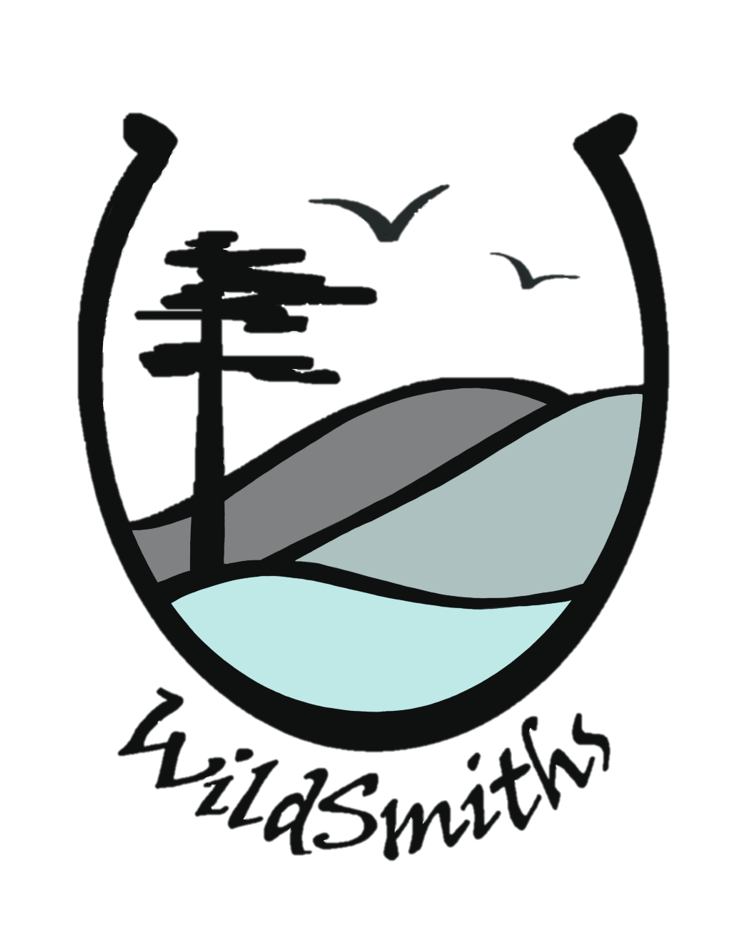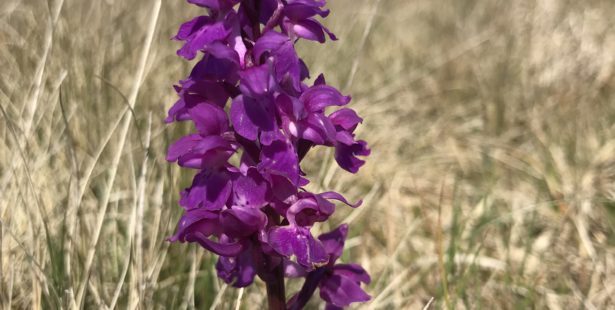Here’s part 2 of our little guide to the orchids of Coll. In part 1, we described the five ‘common’ orchids of the machair and sand-dunes. Today, we’re going to introduce six more orchids, but these tend to favour the more acid, rocky moorland habitats – but again there is a bit of overlap. We’ve included some photos (all taken here on Coll) which show some of the features described in the text.
The first orchids of the year, usually appearing in the first week of May, are the Early Purple Orchids. They seem to like dry rocky knolls – you can see dozens of them along the roadside hummocks on the way from Breachacha to Crossapol or, for the more adventurous, up on top of Beinn Feall. They’re quite tall with densely-packed flower spikes, and purple-stained stems. The flowers are a uniform deep purple with a pale, spotty throat and a distinctive long, purple spur. On the mainland, they’re typically a species of ancient woodland and have heavily-spotted leaves – but here on Coll they seem to have disregard both of these rules.


The next species to appear is by far the most abundant and widespread on the island, the Heath Spotted Orchid. It also flowers for the longest so you can still see it in bloom in September when most of the other orchids have long gone over. It is short in stature but usually occurs in large numbers on dry banks. The pale-pink, sometimes white flowers, decorated with darker pink pencilled-lines, are pretty and striking. It can be confused with the Common Spotted Orchid (they do both have spotted leaves) but the lower lip on its flower usually has two large lobes with a short little pointy bit in between.

In the second half of June, the Lesser Butterfly Orchids appear on the moorland and bogs. They’re quite widespread, but you only ever see one or two at a time. What it lacks in numbers, it makes up for in beauty: a spike of gorgeous, ivory-coloured flowers, each with an elongated, straight lip. It has just two oval leaves, quite unlike the long, linear leaves of most other orchids.


In early July, you have just a couple of weeks to track down the short-lived flowers of the Heath Fragrant Orchid. The best place to look for them is in the east end or on the slopes around Ben Hogh. They’re quite innocuous orchids – a long, thin, loose spike of tiny, pale-pink flowers which hold their wings at right-angles. But the most striking feature is the heady aroma wafting from the long spur. The best way to confirm the identification is to squat down, cup your hands around the spike and inhale – a sweet, incense-like perfume!


The next couple of species are not really restricted to the moorland and bog. The Northern Marsh Orchid is the least abundant of the marsh/spotted orchid group here on Coll. It likes having its feet wet, be it on a soggy moorland flush or a low-lying dune-slack. We find this one tricky to pick out, especially in the dunes when it’s surrounded by other marsh orchids (with which it readily hybridises). It’s usually got a deep-purple flower, with distinctive, kite-shaped side-lobes (when you put it like that, I don’t know why we struggle to pick it out!) The spike is densely-flowered and has an odd flat top, like it has been nipped off.

The last orchid we’re going to mention is Coll’s second most famous resident (after Mairi Hedderwick, obviously!) The Irish Lady’s-tresses was first reported from Coll in the 1930s and its population here (spread over 30 sites) is probably the largest in Britain. It is properly a North American species which only occurs (on this side of the Atlantic) very locally in Ireland and on the Hebridean coast. It has a very different appearance to the other orchids mentioned here – it’s a small inconspicuous plant with grass-like leaves and the tubular white flowers spiral up the stem. They also appear much later than the others – typically during August and September. It’s appearance can be unpredictable: this year (2022), we struggled to find them in the places we found them last year, but did find them in several new locations.

So there you have it – a whistle-stop tour of Coll’s orchidaceous delights! There are two or three other rarities that we’ve not mentioned here and which we’ve not managed to find… yet! When we do, we’ll be sure to come back and tell you!
We hope that this short guide might help if you fancy a spot of orchid-hunting on our wonderful island in 2023.



Very interesting
Many thanks Mike